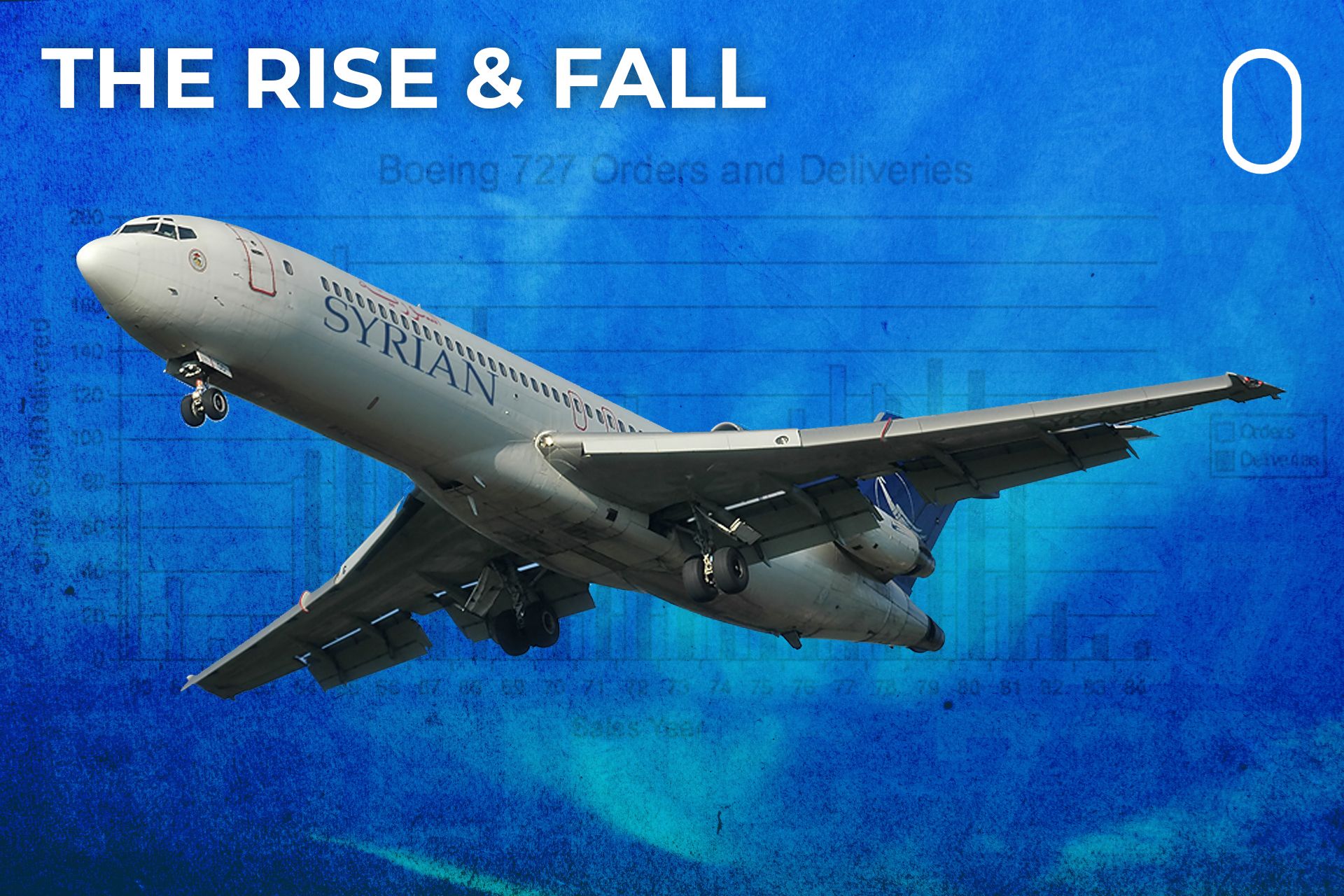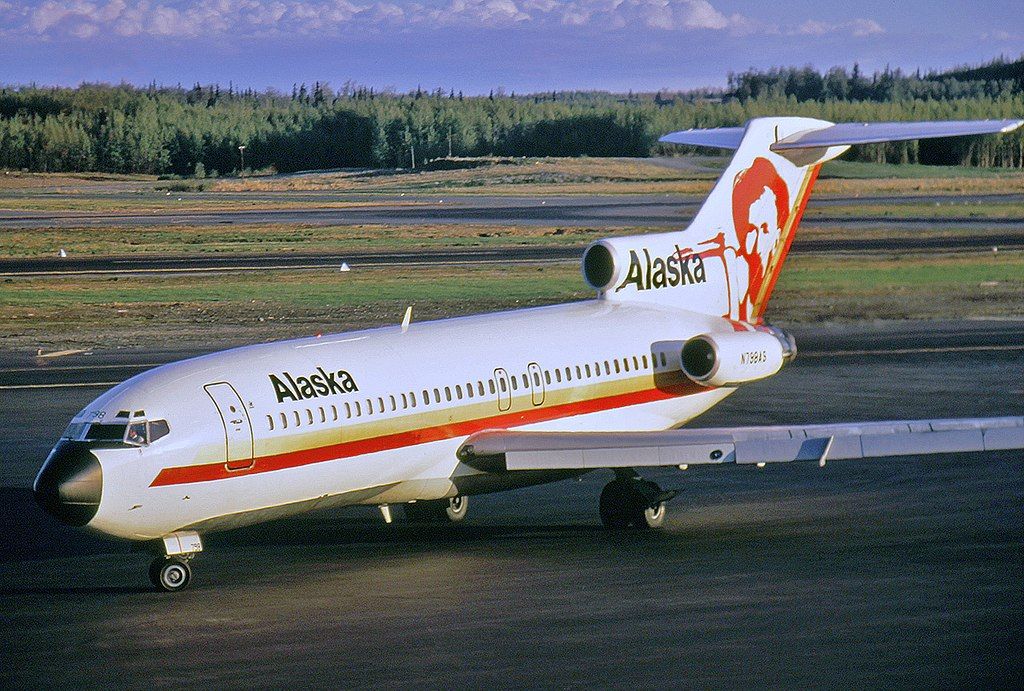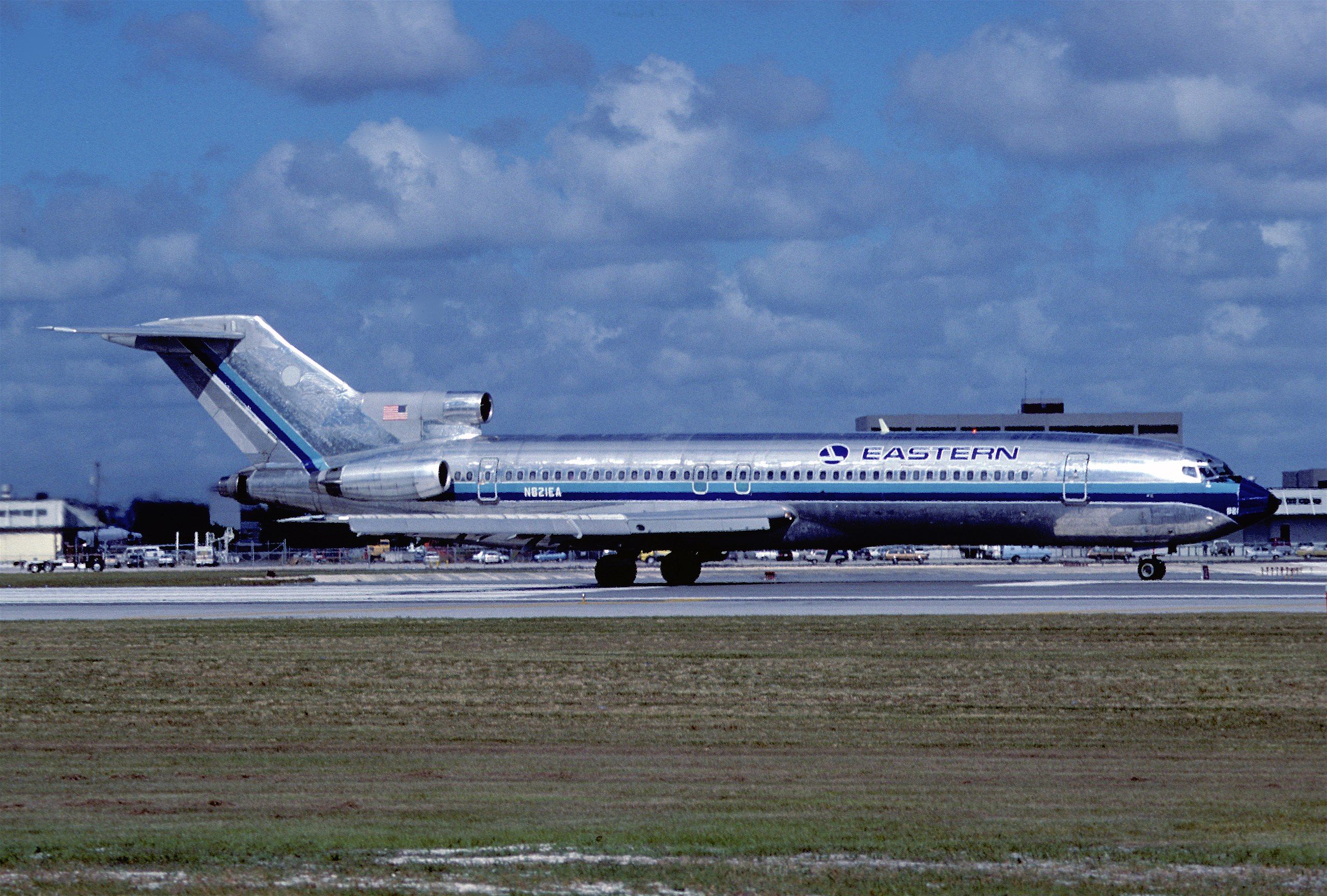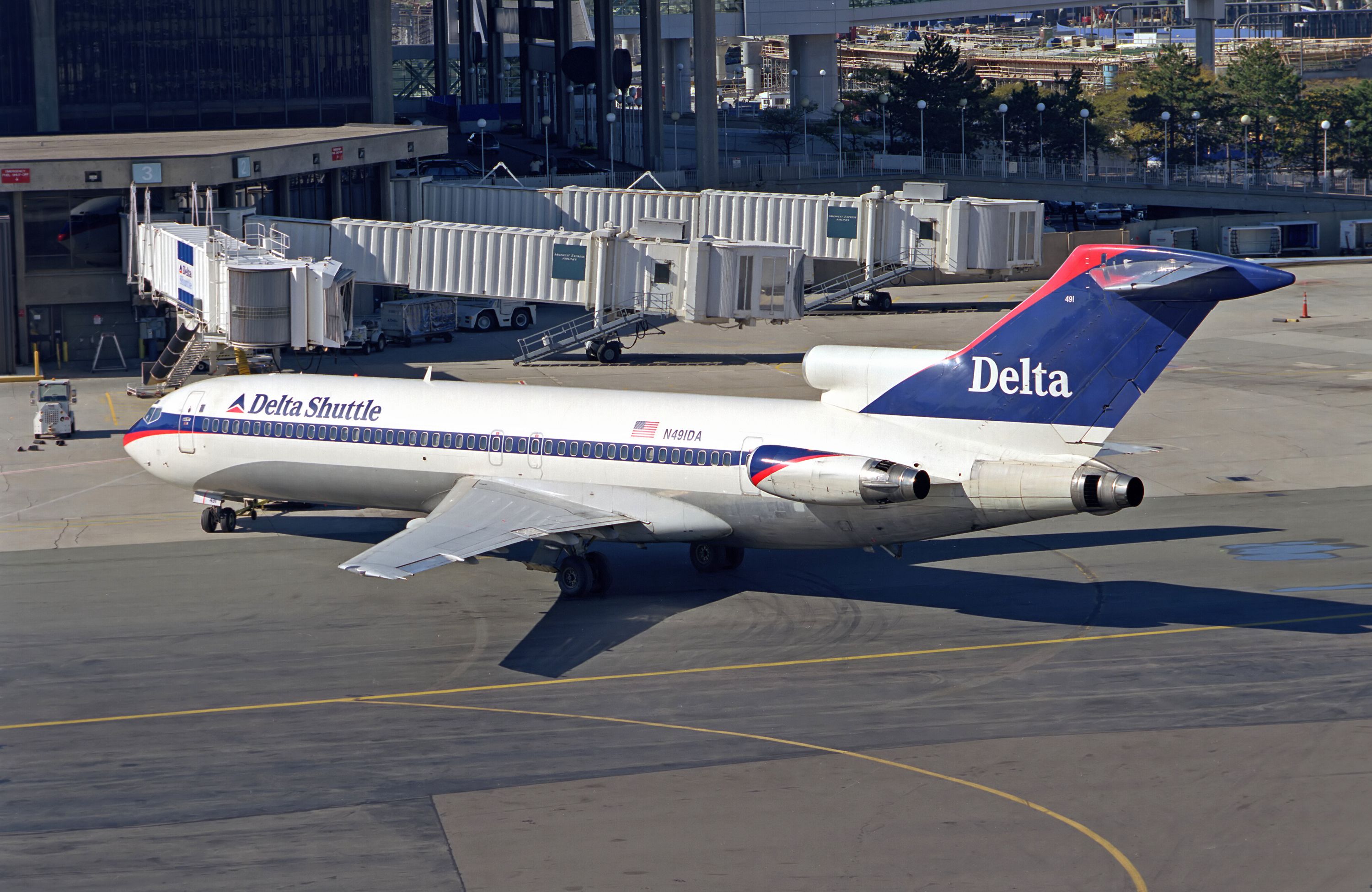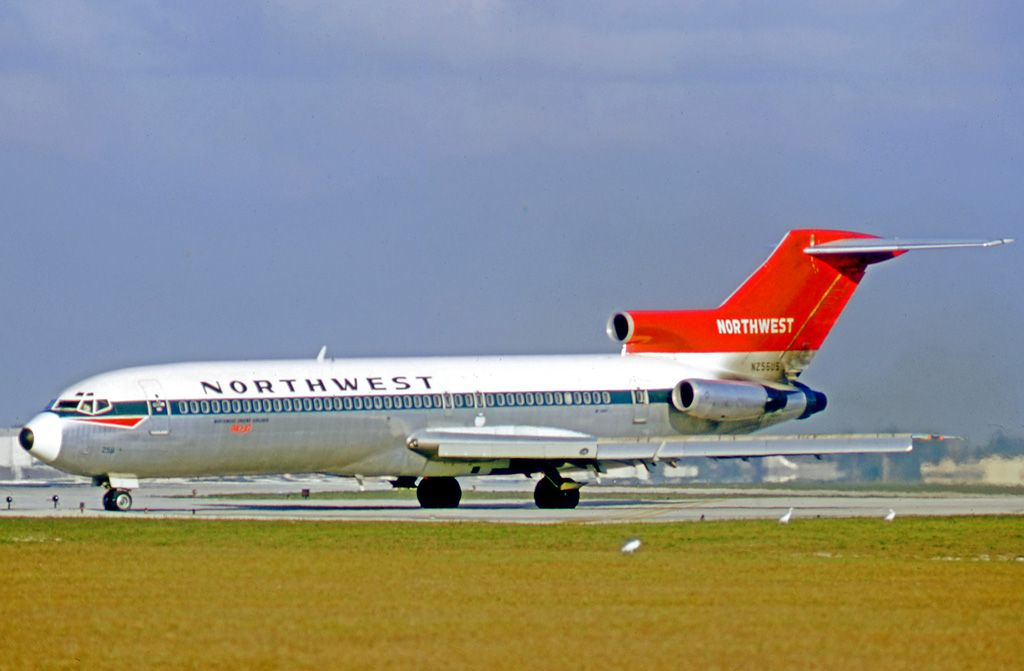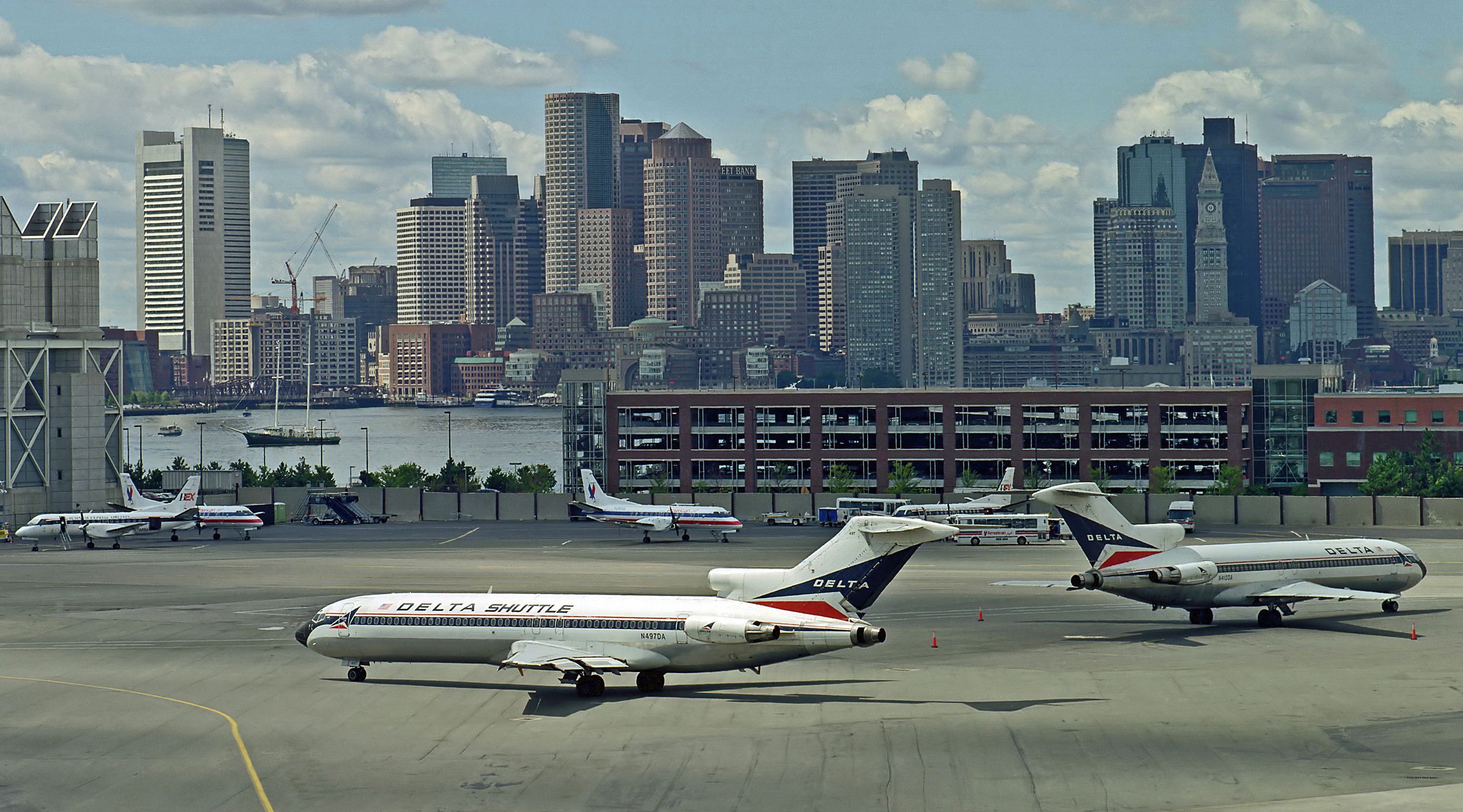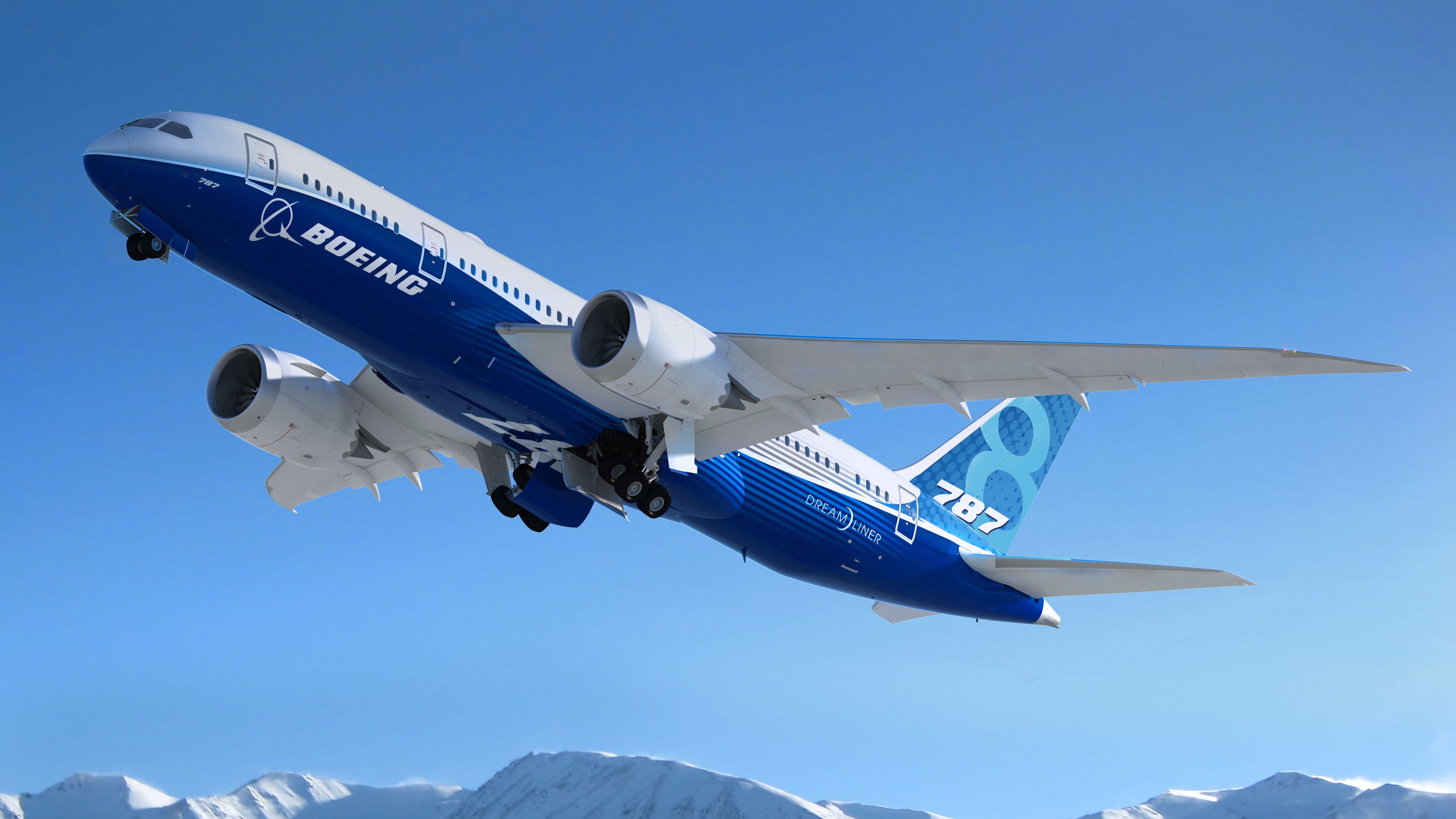Summary
- Boeing’s 727 was the aircraft manufacturer’s best-selling airframe between the 1960s and 1990s, with over 1,800 aircraft delivered.
- The tri-jet was designed to serve short and medium-haul routes with shorter runways, filling a gap in the market for regional jet travel.
- Despite its popularity, the aircraft saw many issues, ranging from its loud engines to an unusually designed wing flap system.
The only trijet aircraft to be produced by Boeing was the 727, a sleek, narrowbody airliner introduced in 1963 with Eastern Air Lines. Despite being long obsolete, the aircraft is a noted classic, standing as Boeing’s hottest-selling airframe until it was overtaken by the 737 in the early 1990s.
Conceived shortly after the launch of the long-haul Boeing 707 in the 1950s, a gap in the market quickly emerged for a short-haul jetliner to operate regional routes, and Boeing was up for another challenge.
Early history of the tri-jet
Once the Boeing 707 program was up and running, the Seattle-based manufacturer turned its attention to building an aircraft suitable for short to medium-range flights. Early development saw Boeing begin production on a shrunken 707 model, designated the Boeing 720, launching the regional aviation market into the jet age.
Nicknamed the “bus stop jet,” the 720 was built to sustain a high frequency of takeoffs and landings and offer excellent low-speed handling. While it proved a fine stopgap and was inexpensive to develop, Boeing knew it needed to create a bespoke solution for a rapidly changing market.
By 1957, Boeing had a team of engineers working on a plane that would later be known as the 727. The standards were simple – the aircraft had to be robust and able to serve communities that had airports with runways shorter than those needed for a 707.
Knowing the potential for massive sales, Boeing was not alone in trying to develop such a jet; competitors Lockheed, Convair, Douglas, de Havilland, and the British Aircraft Corporation were all working on a plane that could take off and land on runways shorter than 5,000 feet.
However, development was focused on more than just hitting broad specifications. Each airline had a list of criteria based on what kind of jet they needed and what they thought would work best. United Airlines was hunting for a plane with four engines that could fly from its high-altitude hub in Denver, while Eastern Air Lines wanted an aircraft with at least three engines to serve its destinations in the Caribbean.
Due to frequently unreliable engines during the pioneering age of jet travel, regulations prevented twin-engined aircraft from flying more than 60 minutes away from a diversion airport, setting the stage for the rise of the three-engine design. By December 1960, Boeing was ready to announce it was building the 727.
The first 727-100 rolled out of the factory on November 27th, 1962, with its maiden flight on February 9th, 1963. The handover occurred several months later, with the jet entering into service with Eastern Air Lines on February 1st, 1964.
Innovating the next era of travel
Because the plane was designed to fly from smaller airports with fewer facilities, the 727 had some unique features. One of its most distinctive features was a retractable rear stairway under the rear fuselage, which is why robber D.B. Cooper famously chose to escape on a 727, as he knew he could parachute from the back stairway. The 727 also had nose wheel brakes to help it stop quicker when landing on small runways.
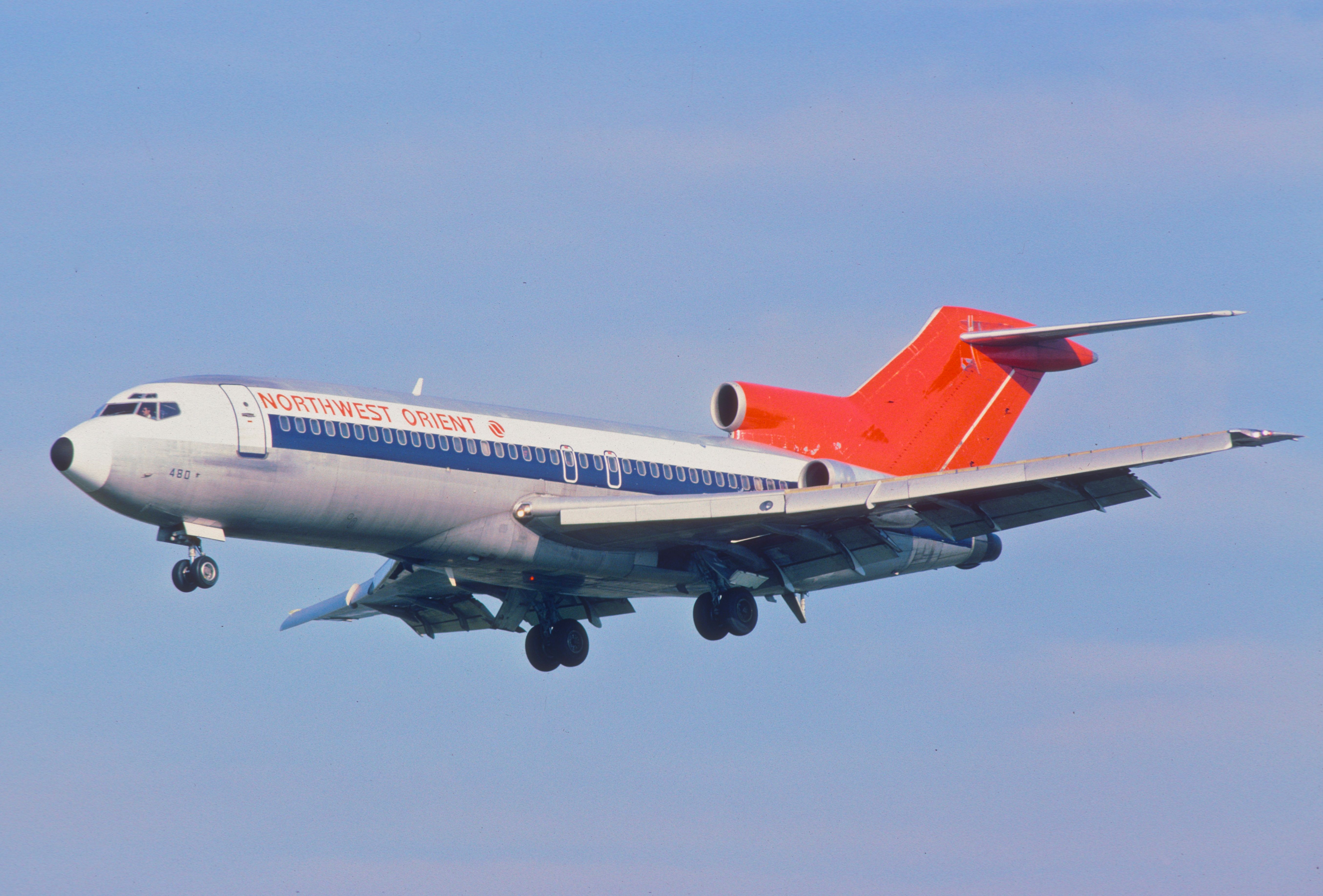
Related
52 Years Ago D.B. Cooper Hijacked And Escaped A Boeing 727
The Boeing 727 was hijacked while en route to Seattle by a mysterious passenger who has yet to be identified.
One of its most significant selling points was the aircraft’s auxiliary power unit (APU). The system allowed the 727 to run the air conditioning and start its engines without a ground-based power supply, quickly winning over airlines operating in areas with less developed airport infrastructure.
Photo: QualityHD | Shutterstock
Like many new aircraft, the Boeing 727 had many innovative features but came with some flaws, leading to several crashes shortly after its launch. In 1965, three Boeing 727-100s crashed in less than three months in the United States while coming in to land, killing a total of 131 people.
Accidents and incidents
Following the string of fatal accidents, many travel agents began to caution against flying on the 727, with some companies even barring their employees from boarding the type. The 727 bounced back quickly, though; within its accident investigations, the Federal Aviation Administration (FAA) concluded that there was nothing wrong with the aircraft and that all three incidents had been caused by pilot error.
Despite the findings, the 727 held an unusually high hull-loss rate. Of the over 1,800 jets produced between 1962 and 1984,120 airframes were lost in accidents, killing a total of 3,865 people, according to the Aviation Safety Network. Industry-wide, accidents have shrunk significantly since its departure from commercial passenger service, with the last fatal crash recorded in 2016.
A significant problem noted by accident investigators was the aircraft’s larger wing flap system, designed to boost lift at lower speeds. Unfortunately, when combined with inexperienced pilots, the flap system could quickly turn deadly, triggering a faster sink rate. Once in motion, it was hard for pilots to recover and was the cause of the fatal crashes. To remedy the issue, airlines retrained pilots on how to land the 727 and restricted the plane’s flap settings to a maximum of 30.
Among the deadliest Boeing 727 accidents was the December 1992 crash of Libyan Arab Airlines Flight 1103. The aircraft, registered as 5A-DIA, collided mid-air with a Libyan Air Force aircraft, resulting in the deaths of 157 passengers and crew, although the two Air Force pilots survived.
Strangely, one of the Boeing 727’s more high-profile hull losses was actually intentional. In 2012, a crash experiment took place in Mexico to examine how accidents occur and which passengers are more at risk.
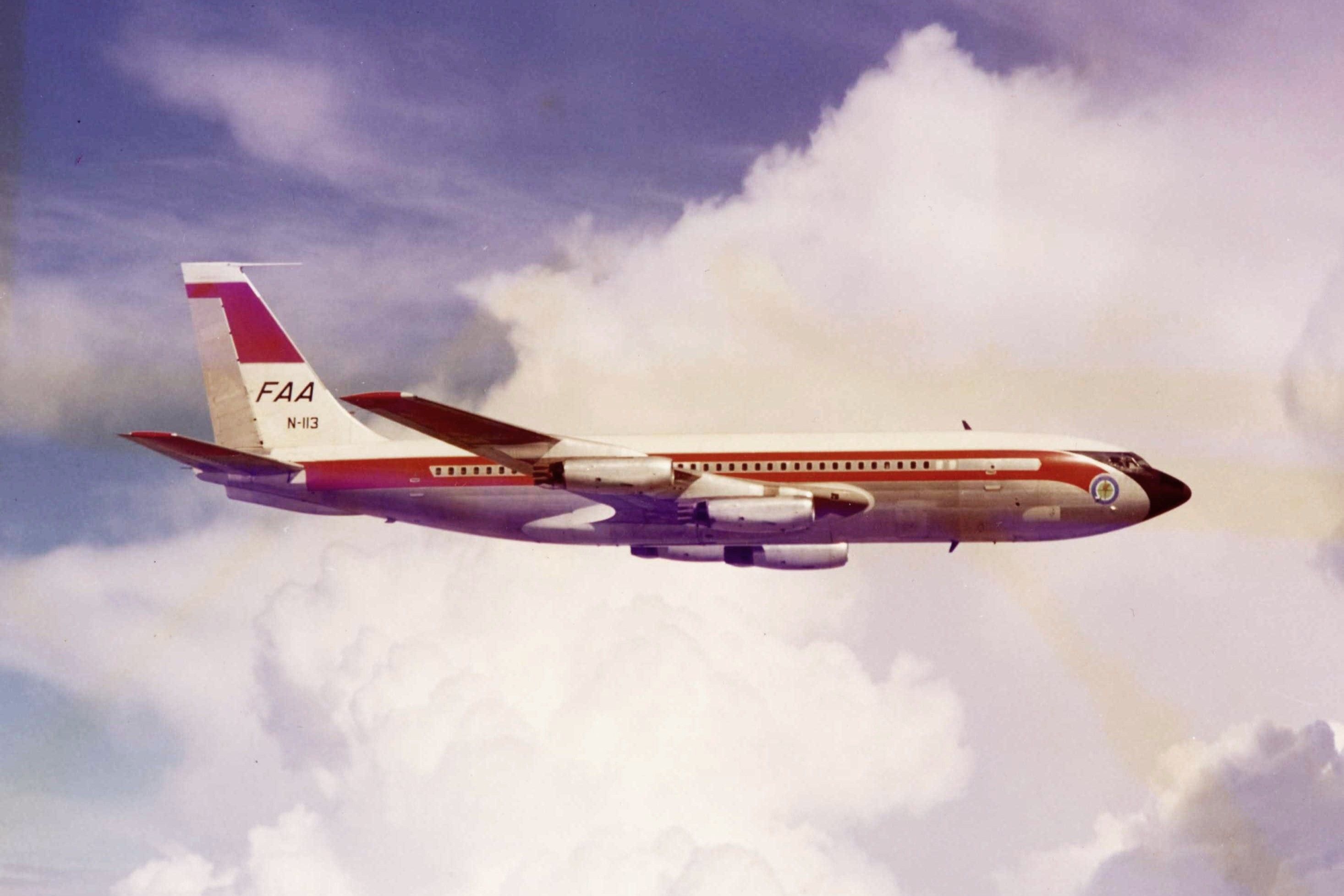
Related
Throwback: When NASA And The FAA Deliberately Crashed A Boeing 720 For Research Purposes
The crash test took place in the Mojave Desert.
Noise complaints and eventual decline
Like other jets of its era, the 727 was very noisy. While this didn’t dampen the plane’s popularity, it did force Boeing to install an anti-noise kit. Initially, Boeing had planned a production run of 250 planes but, thanks to demand, built a total of 1,832 aircraft at its factory in Renton, Washington. The final 727 rolled off the line in September 1984 after a 22-year production run. Despite its shaky start, the Boeing 727 remains one of the best-selling commercial aircraft ever.
Photo: QualityHD | Shutterstock
A range of 727 variants were produced by Boeing, meeting differing requirements and filling different roles.
- 727-100. Eastern Air Lines first flew the original 727 between Miami, Washington, and Philadelphia on February 1st, 1964. In total, 572 examples of the variant were built.
- 727-100C. A passenger/cargo version of the jet with an additional rear freight door. The plane had 98 seats and room for four pallets of cargo.
- 727-100QF. A specially designed version built for UPS Airlines re-engined with Stage 3-compliant Rolls-Royce Tay turbofans.
- 727-200. A stretched version of the 727-100 capable of accommodating 149 to 189 passengers. 310 727-200s were delivered before the 727-200 Advanced came along.
- 727-200 Advanced. Introduced in 1970, the plane featured a larger fuel capacity and more powerful engines. An impressive total of 935 units were produced.
- 727-200F Advanced. A cargo version of the plane powered by Pratt & Whitney JT8D-17A engines. In total, 15 aircraft were built for Federal Express.
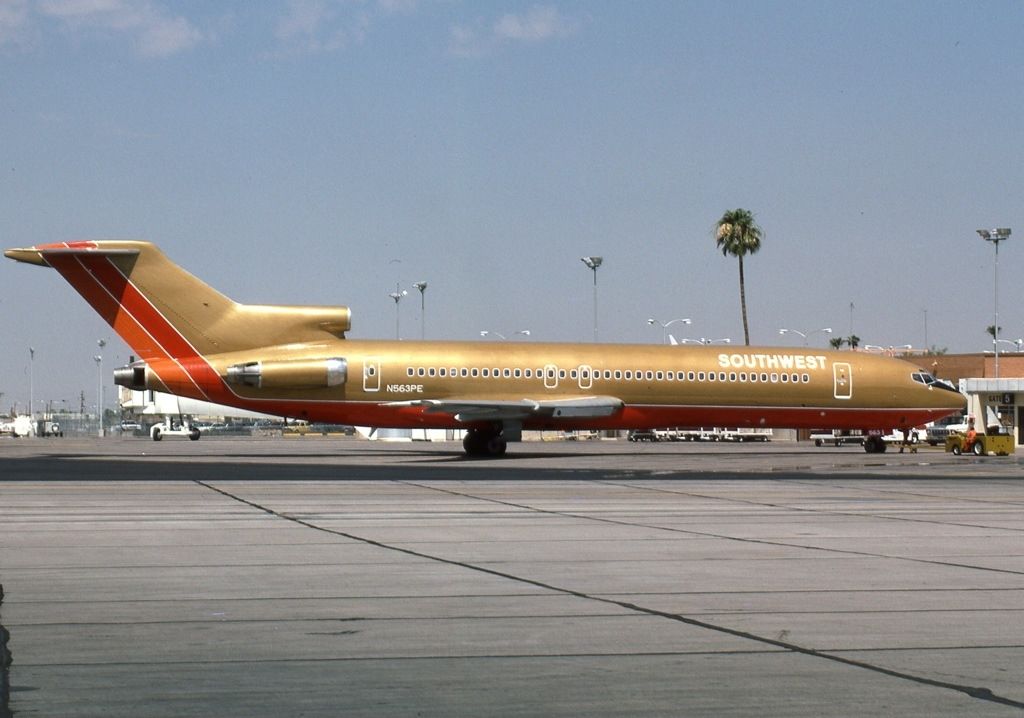
You might also like:
Forgotten Trijets: The Story Of Southwest Airlines’ Short-Lived Boeing 727 Fleet
The carrier leased the aircraft from Braniff and PEOPLExpress.
Two other versions of the plane were considered but never built: the 727-300 and 727-400. Both variants eyed a fuselage extension to seat more passengers; however, the 727-400 traded up the tri-jet configuration for two under-the-wing engines amid the rise in popularity of twin jets. Boeing eventually scrapped the idea, pursuing the clean-sheet Boeing 757 narrowbody.
Major operators of the Boeing 727 over the years included United Airlines (230), Delta Air Lines (191), and Eastern Air Lines (174). Outside the US, the largest operators were Mexicana de Aviación (68), Lufthansa (57), avianca (51), and Iberia (48).
Continued service
With over 60 years of service under its belt, the 727 remains in regular operation with cargo carriers and less frequently as a passenger charter. Data from ch-aviation shows that there are currently 30 active 727s with 21 operators, including private owners, government transport, and air forces. The oldest 727 in active service is with la Force Aérieene du Congo, 9T-TCL. The 727-100C was the 368th airframe constructed by Boeing, joining Eastern Airlines’ fleet in 1967.
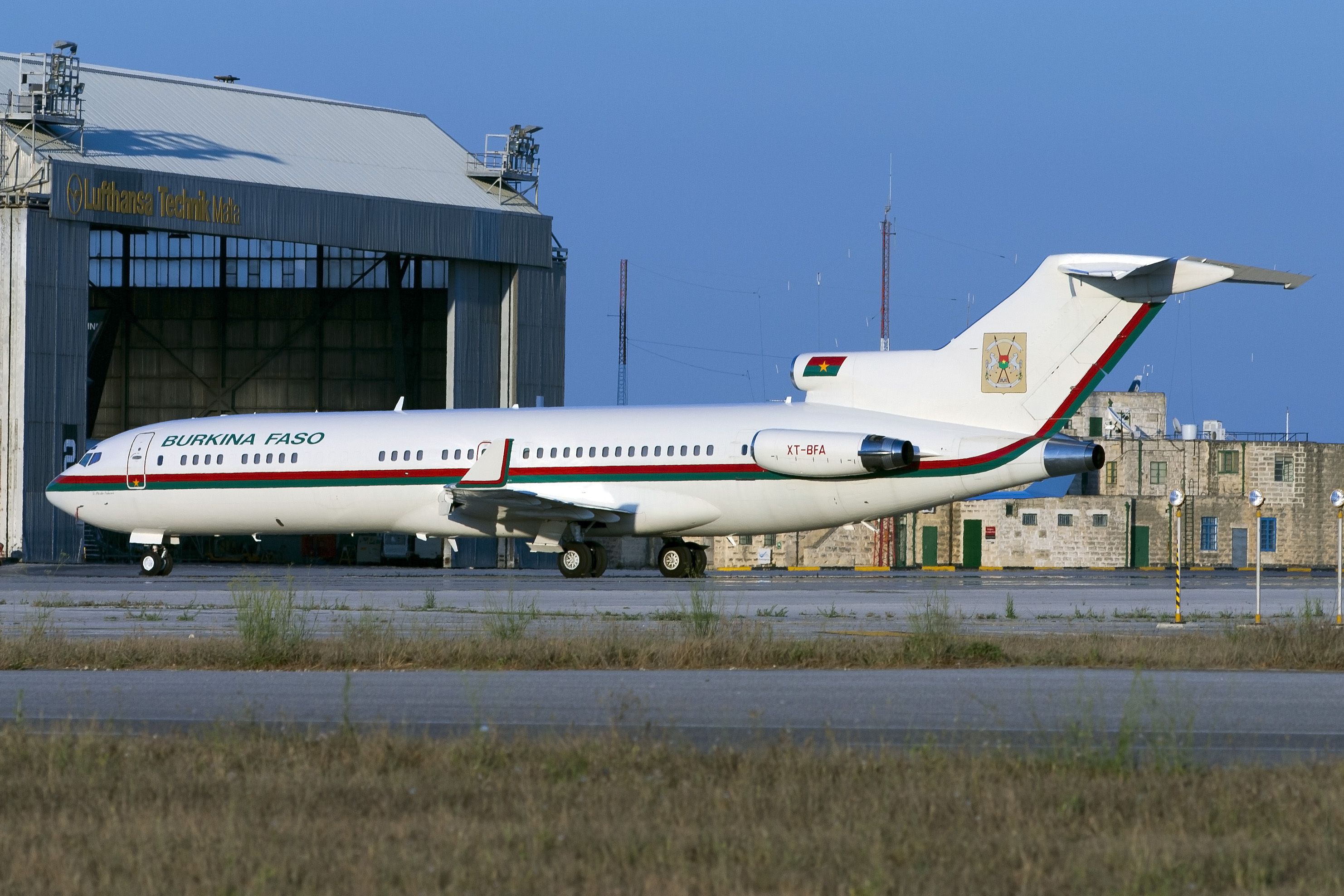
Read more:
In Decline: Which Airlines Still Fly Passenger Boeing 727s?
The plane is still flying in 15 countries globally.
Did you ever fly on a Boeing 727? Share your experiences by commenting below.

